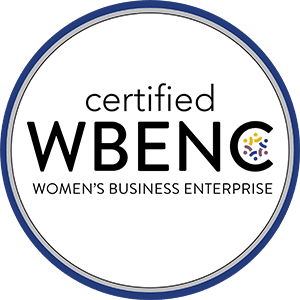The Push for Projects: How to Implement Quality Projects that Stay on Time and on Task
Dec 9th, 2021
The Push for Projects: How to Implement Quality Projects that Stay on Time and on Task
Applying project management principles to your Human Resources responsibilities can help you manage your time, set expectations with stakeholders, and help reduce the stress of your to-do list any time of the year.
So, what is project management, really?
Project management involves the collection of competencies, techniques, and tools that help define, plan and implement projects to achieve their goals. You can use project management skills to organize and smoothly execute a project, or collection of projects, on time and successfully.
We know, you already do all these projects without PM steps, and they get done, right? But if we asked you right now where each project was, what the goals are, if they are on or off track and if you will successfully complete them, would you be stressed out just thinking about it?
Adopting Project Management skills can help you manage multiple projects with multiple timelines and stay informed, clearly communicate progress, and avoid pitfalls. Here are a few suggestions for you to implement for your next project:
Plot your course.
When you start a project, take the time to identify the shared and measurable set of expectations. Nothing is worse than jumping right into a project, making some progress, then coming to a screeching halt because you didn’t establish and communicate the right expectations. We need the steps to be laid out, clearly communicated, and budgeted for before we start the trip. Plot your course before you take your first step.
Identify possible constraints.
We want to know where the pitfalls may be before we set out on our course so we can plan around them. An alternate route is always easier than taking an unknown detour. Layout any possible constraints that would prevent you from meeting your measurable expectations. Project constraints generally occur in one of the following areas, so pay special attention to these elements of your plan:
- Scope
- Resources
- Budget
- Known and unknown risks
- Time
Taking the time to consciously filter the barriers to a process can reduce your stress level dramatically.
Create a project schedule.
We know it is easy to jump right in and get started on your work now that you have planned for any constraints. However, it is important to take a moment to layout your project plan. If you’re managing a project, you need to know what needs to happen when. This is especially important at times when you will be managing multiple projects. If you know what tasks happen when you can plan out your productivity according to your timeline.
In order to create a project schedule, you need to identify these elements:
- Develop your list of project deliverables and activities.
- Sequence the activities.
- Identify your team, if any, who will be helping you.
- Estimate the time associated with each activity.
- Identify the critical path forward.
With all your elements listed, you can use a tool like the Gantt Chart to create your project schedule. A chart-style tool allows you to see all your deliverables, activities, and timelines in one document; it will keep you on track!
Tip: It’s also helpful to overlay all of your current project schedules to see where the timelines and tasks overlap. This will help you understand your capacity, help you more easily delegate tasks, and manage expectations for a better work-life balance!
Using a project schedule allows you to follow your project’s steps in a clearly defined and time-bound way. Throughout the project, core competencies of project management can add value and clarity to your work, including the development of milestones and clear communication plans with your leadership and your team. After all, the easy-to-follow guide Project Management for the Unofficial Project Manager solidifies the importance of communicating progress with the advice that “a cadence of visibility and accountability produces not only reliable results again and again, but also a high-performance team”.
Evaluate your results.
Finally, project management adds value to your work in the form of lessons learned and successes celebrated. Successfully completing a project with clear evidence of your path allows your work to be cycled again, replicated, or changed to improve how not only you perform, but how others around you operate as well.







